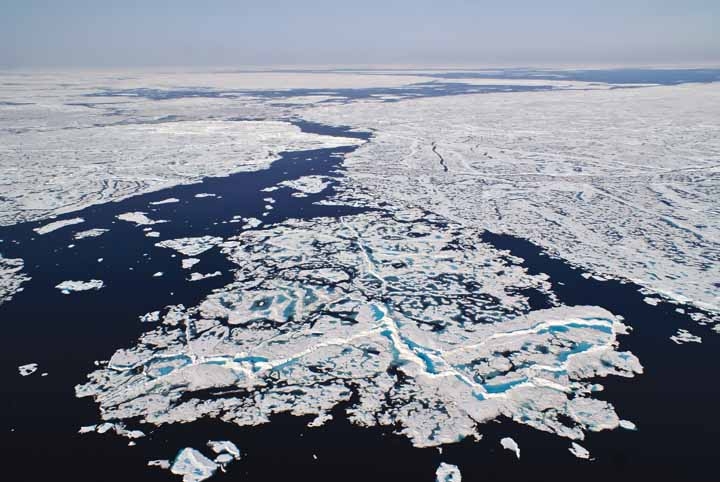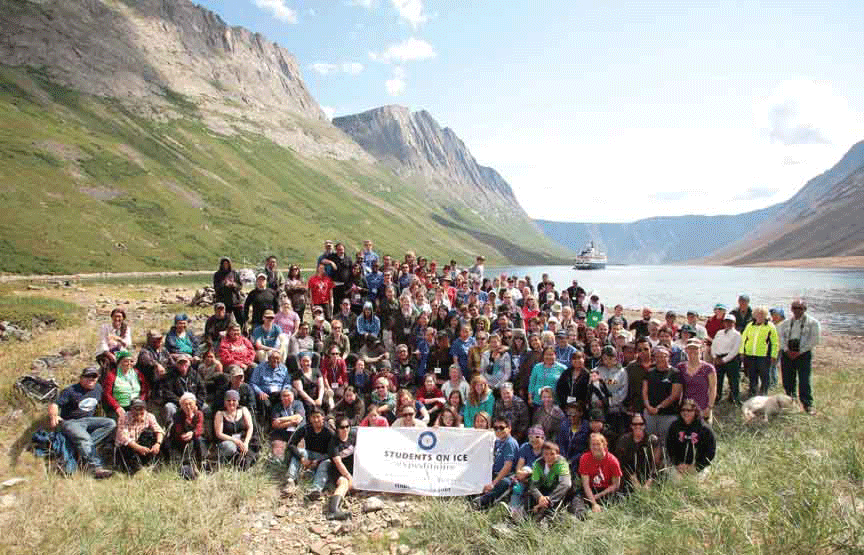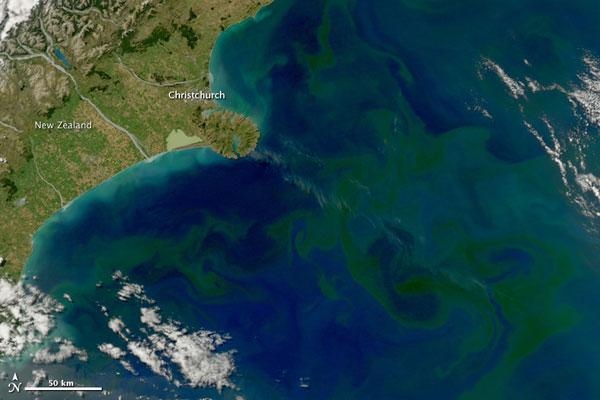
Arctic sea ice coverage reaches new record low
According to satellite observations, sea ice coverage in the Arctic reached a new record seasonal low of only 3.41 million square kilometres in September 2012, 18 per cent below the previous record minimum observed in 2007. In late September, the ice coverage began a new seasonal cycle and will extend to its maximum seasonal coverage next March of about 15 million square kilometres.
This year’s minimum ice coverage manifests and accelerates the general decreasing trend observed since the late 1990s. As the ice retreats, the area of dark ocean surface increases, which results in the absorption of more solar radiation, leading to more melting of ice. However, the coverage of sea ice is also governed by the drift of ice due to winds and ocean currents, and by the redistribution of ice. To distinguish between ice area changes and ice volume changes, ice thickness information is required, which is not easily available. Christian Haas, Canada Research Chair in Arctic Sea Ice Geophysics and his team at York University in Toronto, address this issue in their research by performing airborne ice thickness surveys over key regions of the Arctic, as well as by exploiting novel satellite methods dedicated to the measurement of sea ice thickness like those of the European Space Agency satellite CryoSat.
The decreasing summer sea ice coverage results in longer ice-free seasons. These changes have consequences for the ecosystem and the lifecycles of sea birds and mammals like seals, whales and polar bears, as well as for northern residents who rely on the ice for hunting and travel. Arctic sea ice retreat is also seen as an opportunity for improved access to natural resources and new Arctic shipping routes. However, despite the long-term sea ice decline, there is still annual regional variability, and sea ice in the marginal seas can rapidly move by tens of kilometres per day due to winds and currents. For example, sailing in the Northwest Passage through the Canadian Arctic Archipelago still requires the use of ice-strengthened ships or even icebreakers for safe and fast transit, in contrast to a few earlier summers when the passage was completely ice-free for a few weeks. There are also ice islands and icebergs in these waters which do not melt during the summer and pose a huge hazard for offshore operations. Some of Haas’ research also studies the coverage, thickness and drift of ice islands and thick multi-year ice in the Canadian Arctic to help evaluate the feasibility and safety of shipping along this sea route.
According to research undertaken by David Barber, Canada Research Chair in Arctic System Science at the University of Manitoba and ArcticNet Network Investigator, it is now apparent that sea ice conditions in the northern hemisphere are in a rapid state of transition from one dominated by a perennial to a seasonal icescape. There are many impacts of a practical nature affecting the safe operation of maritime industries now jockeying to develop newly accessible Arctic resources.
Shipping and the oil and gas industry are particularly susceptible to the changing icescape as they require information on ice hazards and the oceanic and atmospheric forcing of these hazards. Ironically, the decrease in multi-year sea ice has actually increased the presence, timing and relative velocities of certain ice hazards.

Recent studies led by ArcticNet Network Investigators Derek Mueller of Carleton University, Luke Copland of the University of Ottawa and Warwick Vincent of Université Laval have highlighted the fact that ice shelves along the northwest flank of Ellesmere Island have lost significant mass. In the 1940s, a continuous ice shelf extended for over 450 km of the island’s northwest coast, joining many discrete exit glaciers. This large continuous shelf began to break up early in the 21st century with complete loss of the Markham and Ayles Ice Shelves and significant mass loss of the Ward Hunt, Milne, Petersen and Serson Ice Shelves. Pieces of these ice shelves are now a common sight in the Beaufort Sea.
During recent RADARSAT surveys in the Beaufort Sea, the University of Manitoba team identified 17 glacial ice features that ranged in size from hundreds to thousands of metres in area. These ice features were usually embedded within the sea ice. Some had significant mineral deposits on their surface (anywhere from gravel to boulders the size of a Volkswagen Beetle). Barber and his research team speculate that these glacial ice floes derive from the collapse of the ice shelves along the northwest flank of the Canadian Arctic Archipelago. In the summer, these thick ice formations become mobile and begin their journey southwards into the Beaufort Ice Gyre and travel over the areas where hydrocarbon exploration is currently underway.
The objective of this research is to monitor some of the current ice-related hazards in the Southern Beaufort Sea and to provide estimates of the velocity of various ice thickness classes in order to inform ship navigators, the oil and gas industry, and regulatory bodies. The project is part of the Beaufort Regional Environmental Assessment (BREA), a multi-stakeholder initiative spon-soring regional environmental and socio-economic research to gather new information vital to the future management of the Beaufort Sea.
For more information: Beaufort Regional Environmental Assessment (BREA): http://www.beaufortrea.ca/
ArcticNet: www.arcticnet.ulaval.ca
TOP PHOTO: Martin Fortier, ArcticNet













